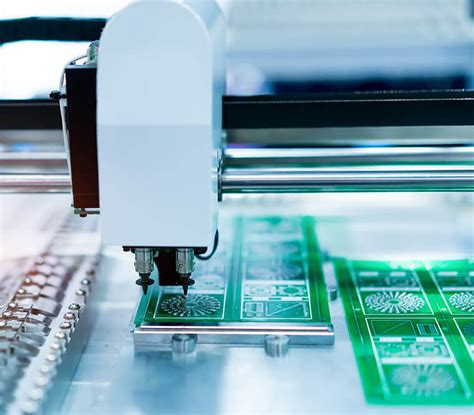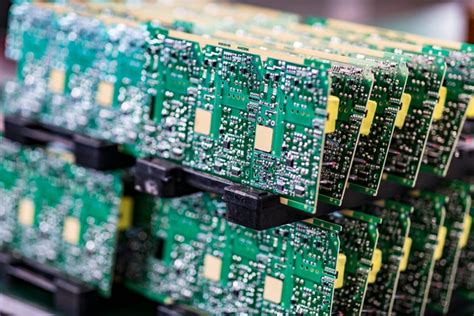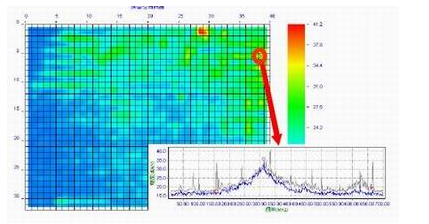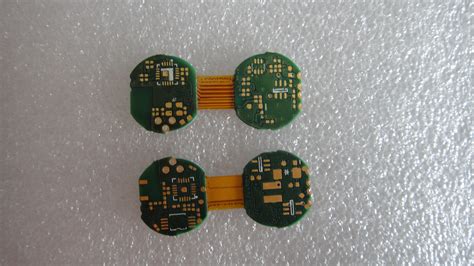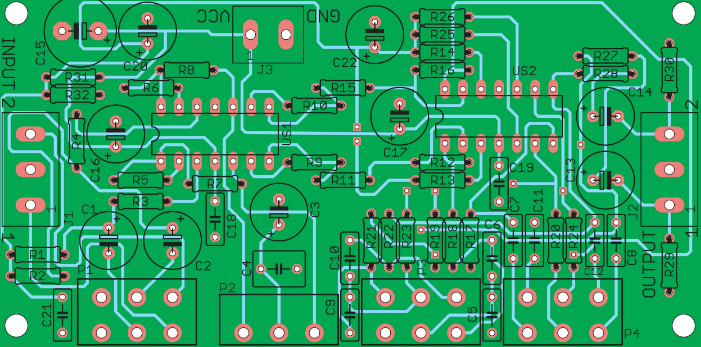Innovative Approaches in PCB Design and Manufacturing
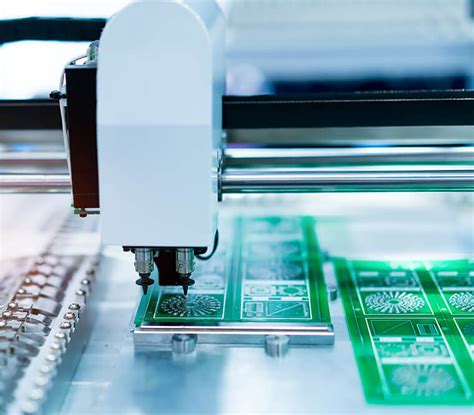
Key Takeaways
The realm of PCB design and manufacturing has witnessed a remarkable transformation in recent years, driven by various innovative techniques that seek to enhance both efficiency and performance. One major takeaway is the emphasis on integrating automation within the PCB manufacturing process, which significantly streamlines workflows and minimizes manual errors, thereby expediting production cycles. Additionally, the rise of advanced materials has played a crucial role in enhancing overall performance while allowing for lightweight designs that cater to modern electronic demands. Leveraging data analytics in design also facilitates smarter decision-making processes that ultimately lead to cost reductions and better functionality.
Importantly, as sustainability becomes a focal point in industry practices, companies are now adopting eco-friendly processes that not only reduce waste but also improve efficiency in PCB assembly (PCBA). This shift towards sustainable methods aligns with broader environmental goals while still prioritizing innovation and quality. For businesses looking to stay ahead, understanding these shifts can help them adapt to the evolving landscape of PCB technology.
| Key Aspect | Impact on PCB Design & Manufacturing |
|---|---|
| Integration of Automation | Increases efficiency and reduces human error |
| Advanced Materials | Enhances product performance while reducing weight |
| Data-Driven Decisions | Optimizes design processes for cost-effectiveness |
| Sustainable Practices | Minimizes environmental impact and meets regulatory standards |
In conclusion, staying informed about these innovative methods can unlock new possibilities for improving both the productivity and sustainability of PCB assembly solutions. This knowledge is critical not only for manufacturers aiming for operational excellence but also for designers who aspire to create cutting-edge electronic products.

Innovative Techniques in PCB Design
In the evolving landscape of PCB design, innovative techniques are becoming increasingly vital for addressing modern challenges. One of the most effective strategies involves optimizing PCB assembly processes through advanced software solutions. By leveraging computer-aided design (CAD) tools, designers can create intricate layouts that maximize space efficiency while maintaining electrical integrity. Additionally, utilizing simulation software allows engineers to predict and alleviate potential issues before manufacturing, enhancing overall reliability.
Moreover, multi-layer PCBs represent a significant breakthrough in this field. They facilitate reduced footprint and enhanced performance through denser component placement without compromising functionality. Implementing new approaches to thermal management, such as heat-sinking and thermal vias, ensures that devices remain efficient under heavy loads.
Another noteworthy innovation is the integration of flexible PCB technologies. These materials not only allow manufacturers to meet the demands for lighter and more compact devices but also enable designers to create unique form factors tailored to specific applications. By adopting flexible circuits, companies can significantly reduce weight while improving durability.
Finally, embracing sustainable practices in PCBA helps the industry pivot toward greener methods without sacrificing quality. From utilizing eco-friendly materials to adopting waste-reduction strategies during manufacturing, these advancements reflect a commitment to both performance and environmental responsibility.
In summary, the continuous evolution of techniques in PCB design is crucial for fostering efficiency and performance improvements that resonate throughout the technology landscape. Such innovations not only bolster manufacturing processes but also pave the way for future growth in various electronic applications, maintaining a competitive edge in a rapidly advancing market.
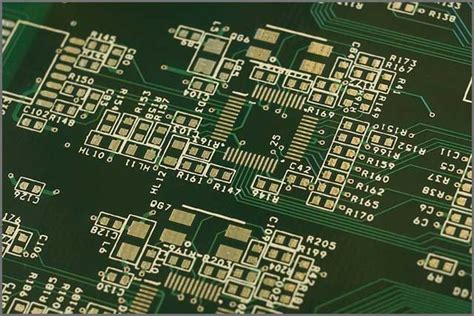
Advancements in PCB Manufacturing Processes
The landscape of PCB manufacturing continues to evolve with emerging technologies and innovative practices that significantly enhance efficiency and reduce costs. One of the most notable advancements is the integration of automated systems, which streamline the PCB assembly process, allowing for quicker turnaround times and minimizing human error. Manufacturers are increasingly adopting advanced computer-aided design (CAD) software that supports intricate designs, accommodating smaller component sizes and higher circuit densities. This technology not only aids in optimizing layout efficiency but also aligns with the rigorous requirements of modern electronics.
Furthermore, advancements in materials science have led to the development of high-performance substrates that improve reliability and electrical performance under varying conditions. These new materials, including flexible PCBs and advanced laminates, play a crucial role in driving innovation within sectors such as telecommunications and consumer electronics. Additionally, manufacturers are focusing on implementing sustainable practices throughout the production process. Employing environmentally-friendly materials and reducing waste not only supports regulatory compliance but also appeals to an increasingly eco-conscious market.
In summary, as technology progresses, so too does the PCBA industry, which continuously seeks ways to refine processes, enhance performance, and ultimately deliver superior products. These efforts not only contribute to cost savings but also enable manufacturers to stay competitive in an ever-evolving marketplace. With such advancements at play, the future of PCB manufacturing appears promising, paving the way for new applications and opportunities within various sectors.
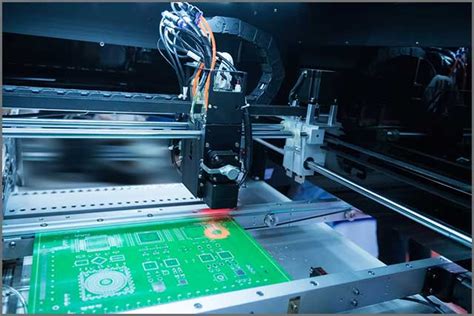
Reducing Costs through Efficient Design
In the realm of PCB design, optimizing cost efficiency is paramount for manufacturers and suppliers striving to remain competitive. A key strategy involves adopting efficient design methodologies that minimize material waste and enhance production processes. By implementing tools such as Design for Manufacturability (DFM), engineers can streamline the transition from pcb design to pcb assembly, ensuring that each design decision reflects a commitment to cost reduction without compromising quality. Furthermore, early collaboration between engineers and manufacturers allows for the identification of potential issues before they escalate into costly revisions during production. Utilizing advanced software tools to simulate various assemblage scenarios also aids in refining designs, ultimately leading to a significant decrease in production times and costs. The integration of automated processes within pcba will further enhance efficiency, allowing for faster turnaround times while reducing labor costs associated with manual interventions. By focusing on these innovative design practices, companies can not only significantly lower their operational expenses but also increase overall productivity in the highly competitive landscape of PCB manufacturing.
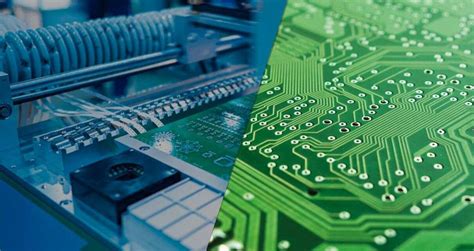
Enhancing Performance with Modern Materials
The evolution of PCB design has led to a significant emphasis on the selection of modern materials that enhance the overall performance of pcb assemblies. Utilizing high-frequency laminates, for instance, greatly improves signal integrity, a crucial factor for devices operating at GHz frequencies. Moreover, advanced materials such as thermal management substrates have revolutionized how heat dissipation is handled within electronic circuits, ensuring that components operate within optimal temperature ranges, thereby enhancing reliability and life expectancy. Also, innovative conductive inks and flexible substrates are paving the way for producing thinner, lighter, and more versatile designs without compromising functionality.
“Incorporating the right materials can significantly reduce weight while boosting performance metrics in electronic devices.”
This approach not only enhances performance but also contributes towards cost-efficiency in production by optimizing the use of resources through effective material selection. Understanding these advancements is imperative for designers aiming to stay ahead in a rapidly evolving industry, where every innovation can lead to improved performance metrics in pcba processes and project outcomes. By continually exploring these modern materials and their applications, businesses can ensure that their PCB solutions meet the demands of today’s high-performance electronics landscape.
Sustainable Practices in PCB Production
In the realm of PCB design and manufacturing, sustainability has emerged as a crucial focus for industry players. The push towards environmentally-friendly methods has led to innovative practices that not only benefit the planet but also enhance overall efficiency and quality. For instance, the use of eco-friendly materials in PCB assembly contributes significantly to waste reduction and resource conservation. Companies are increasingly opting for materials that are less harmful to the ecosystem, which goes hand in hand with adopting closed-loop systems to recycle production scraps. Furthermore, advances in technology allow for more efficient processes which minimize energy consumption during manufacturing, positively impacting the carbon footprint of PCBA operations. By integrating these sustainable practices, manufacturers not only comply with global regulatory standards but also appeal to a growing base of environmentally conscious consumers. As these methods are further developed and refined, they are likely to lead the way towards a more responsible and efficient future in PCB production, ensuring that businesses thrive while protecting our planet.

Future Trends in PCB Technology
As we look ahead in the field of PCB design and manufacturing, several emerging trends are positioned to reshape the landscape, catering to the growing demand for efficiency and performance. One significant trend is the integration of advanced automation in PCB assembly (PCBA), which streamlines production processes and minimizes human error. The rise of intelligent systems allows for real-time data analysis, contributing to enhanced precision in board layout and component placement. Another pivotal advancement is the adoption of flexible PCBs, which offer increased versatility in modern electronics. As devices become more compact, flexible boards are proving essential for innovative designs while maintaining performance. Furthermore, sustainability is taking center stage as manufacturers adopt environmentally friendly materials and processes that not only comply with regulatory standards but also enhance overall product longevity. These sustainable practices not only reduce waste but also lead to a decrease in costs associated with production. As these trends continue to evolve, keeping abreast of developments in PCB technology is critical for stakeholders aiming to maintain competitive advantage in an ever-changing industry landscape.
Integrating Automation in PCB Manufacturing
The adoption of automation in PCB manufacturing is revolutionizing the industry, enhancing overall efficiency and precision. By streamlining various processes involved in pcb assembly, manufacturers can achieve a level of accuracy and speed that manual methods simply cannot match. Techniques such as automated pick-and-place systems illustrate how technology is being leveraged; these systems deftly position components on the PCB with incredible accuracy, reducing the risk of human error that can occur during manual assembly. Moreover, advancements in software allow for real-time monitoring and adjustments throughout the manufacturing process, ensuring the highest standards are met consistently.
In terms of cost reduction, automation plays a pivotal role; by minimizing labor costs and increasing production rates, companies can optimize their bottom line while still delivering quality PCBA products. Furthermore, automation facilitates the integration of advanced materials and processes that enhance performance metrics significantly. As manufacturers embrace automation technologies such as robotics and AI-driven systems, they not only meet current demand but also set the stage for scalable production that can adapt to future trends in PCB technology. This forward-thinking approach positions businesses to stay competitive in an ever-evolving marketplace while also fostering an environment of innovation that continuously strives for excellence.
Case Studies of Successful PCB Innovations
Successful innovations in PCB assembly have emerged as game-changers in the industry, illustrating how new methodologies significantly enhance efficiency and performance. For instance, companies like XYZ Electronics have implemented a revolutionary approach to pcba through the use of advanced simulation software. This software allows for real-time feedback during the design phase, identifying potential flaws before they impact the final product. Another notable example is ABC Corp, which adopted a flexible manufacturing process that integrates automation into its PCB manufacturing line. This combination not only minimizes lead times but also allows for greater customization options, catering to diverse client needs without compromising quality. Moreover, these innovations have paved the way for sustainable practices by reducing waste and optimizing material usage. These case studies not only highlight the advancements that these companies have achieved but also serve as a benchmark for others looking to explore groundbreaking techniques in the PCB industry. The insights gleaned from their experiences underscore how combining modern technologies with traditional manufacturing can lead to substantial improvements in both performance and cost-efficiency.
Conclusion
In an era where efficiency and innovation are paramount, the landscape of PCB design and manufacturing continues to evolve significantly. The integration of advanced techniques in pcb assembly enhances not only the production efficiency but also the end product’s performance. Innovations like automated assembly lines and 3D printing technologies have significantly reduced lead times and labor costs, while also allowing for greater design complexity. Moreover, the use of modern materials ensures that PCBs are lighter, more durable, and better equipped to handle higher frequencies, consequently improving signal integrity. As businesses increasingly seek to optimize their operations, methods such as design for manufacturability (DFM) and simulation tools have become crucial in minimizing errors before production. This proactive approach not only accelerates the PCBA process but also reduces waste, paving the way for a more sustainable manufacturing environment. Looking ahead, the emphasis on sustainability will drive further innovations in materials and processes in PCB production. As these advancements continue to unfold, it is clear that adaptability and forward-thinking strategies will be essential for organizations aiming to remain competitive in the rapidly changing landscape of electronic manufacturing.
FAQs
What is PCB assembly and how does it differ from PCB design?
PCB assembly, often referred to as PCBA, is the process of integrating electronic components onto a printed circuit board (PCB) after its design phase. While PCB design focuses on creating the layout and pathways for electrical connections, assembly involves soldering the components onto the board to create a functional electronic device.
What are the advantages of modern techniques in PCB design?
Modern techniques in PCB design provide several advantages, such as enhanced complexity management, improved signal integrity, and reduced physical space requirements. These innovations facilitate the creation of high-density designs that are essential for today’s compact electronic devices.
How do innovative manufacturing processes impact PCB production?
Innovative manufacturing processes streamline PCB production, reducing lead times and minimizing errors. Techniques like automated assembly lines and advanced testing methods improve reliability and quality while decreasing overall costs associated with manual labor.
What materials are best suited for enhancing performance in PCBA?
The selection of materials is crucial for optimizing performance in PCBA. High-frequency laminates, flexible substrates, and thermally conductive materials can enhance thermal management and signal integrity, ultimately leading to more reliable and efficient electronic devices.
Can sustainable practices be applied in PCB manufacturing?
Yes, sustainable practices can be integrated into PCB manufacturing. Techniques such as using lead-free solder, recycling materials, and optimizing energy consumption during production can significantly reduce the environmental impact of electronic fabrication processes.

